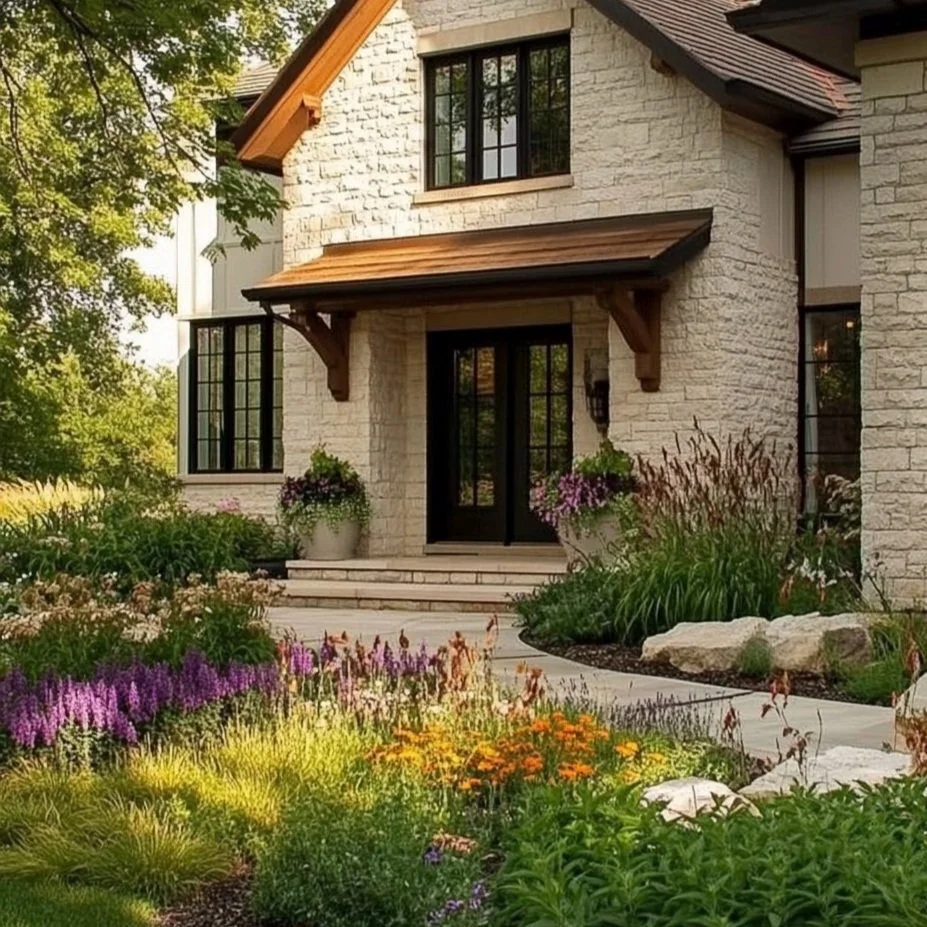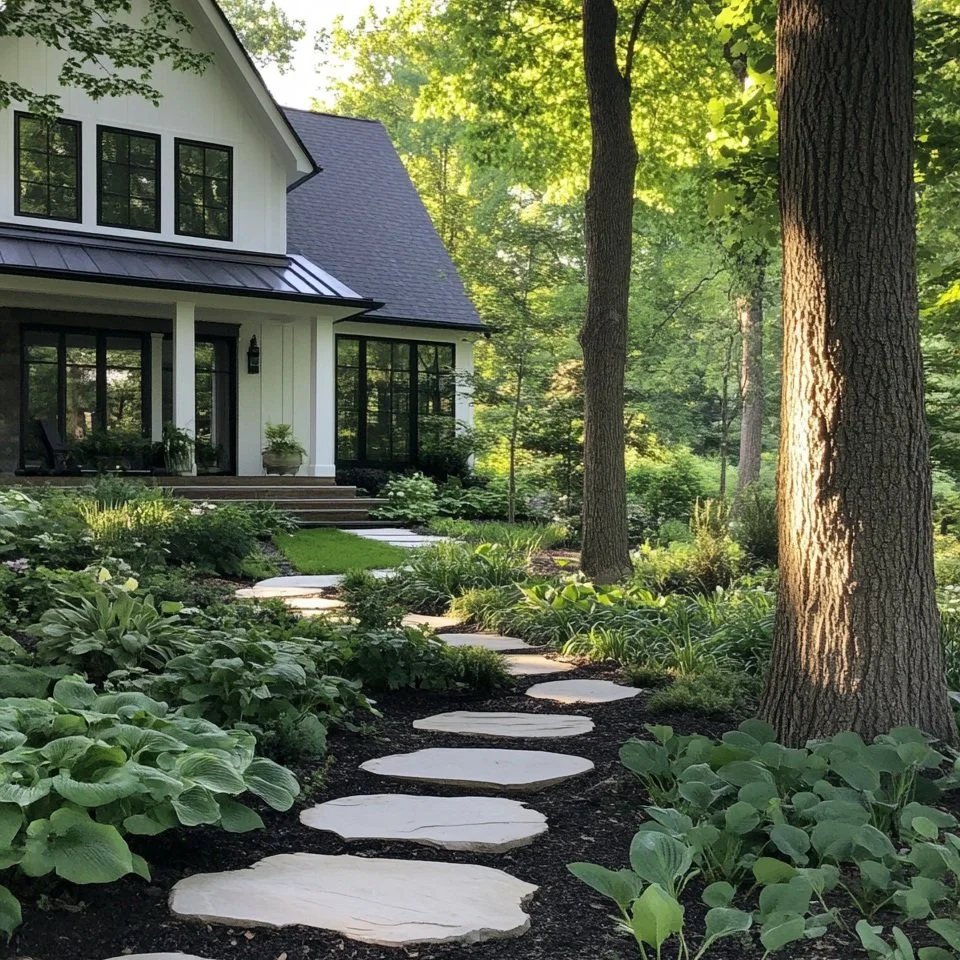From Lawn to Landscape: 5 Beautiful Alternatives to the Traditional Grass Yard
For decades, the standard American yard has followed a predictable formula: a big patch of grass, a few tidy shrubs, and maybe a flower bed if you’re feeling fancy. But something is shifting. Homeowners are rethinking that high-maintenance patch of green. Maybe it’s the cost of water. Maybe it’s the hours spent mowing. Or maybe—it’s just the growing realization that a yard can be more than something to “keep up.” It can be a place that grows food, attracts life, or just feels like home.
In this post, we’ll explore 5 inspiring lawn alternatives—all beautiful, functional, and increasingly accepted in more neighborhoods across the country.
1. The Cottage Garden
What it is:
A lush, overflowing mix of flowers, herbs, shrubs, and sometimes even veggies—layered with little concern for rigid symmetry.
Why it works:
Cottage gardens are warm, inviting, and alive with color and texture. They bloom in waves, attract pollinators, and evolve with the seasons. Plus, they soften the look of a home like nothing else.
Best for:
Smaller yards, front entries, or gardeners who love a little romance in their landscape.
Start here:
Pick a few sturdy perennials (like coneflowers, black-eyed Susans, or salvia), tuck in some herbs (like lavender or thyme), and plant in clusters for fullness. Add a winding path or an old bench for character.
2. The Modern Meadow
What it is:
A blend of native grasses and flowering perennials arranged in a way that feels natural—but is actually designed for beauty and balance.
Why it works:
Modern meadows require less water, less mowing, and invite butterflies, bees, and birds to make themselves at home. They're wild at heart but thoughtfully planned.
Best for:
Side yards, larger backyards, or anywhere you want visual movement without constant upkeep.
Start here:
Use native wildflowers like yarrow, bee balm, and milkweed. Mix with warm-season grasses like little bluestem or switchgrass. Avoid tall, floppy plants near walkways—keep taller growth behind or framed in.
3. The Potager Garden
What it is:
A space that feeds your eyes and your table—blending fruit trees, raised beds, climbing veggies, and edible ground covers into the landscape.
Why it works:
No need to hide your veggie garden anymore. Edible landscapes are practical, beautiful, and surprisingly stylish with the right design.
Best for:
Backyards, side yards, and homeowners who love fresh herbs, tomatoes, and garden-fresh meals.
Start here:
Use blueberry bushes as a hedge. Plant colorful Swiss chard in flower beds. Add a trellis of climbing beans or tomatoes. Herbs like rosemary, thyme, and sage work well as borders and are drought-tolerant too.
4. The Gravel & Mediterranean Garden
What it is:
A drought-friendly garden that uses gravel or stone paths, sculptural plants, and warm-weather blooms—taking cues from Spain, Greece, and Southern California.
Why it works:
It’s low-water, low-maintenance, and high-style. Great for dry climates or sunny front yards where grass struggles to survive.
Best for:
Hot, dry regions or homeowners looking for a clean, modern feel with rustic charm.
Start here:
Plant lavender, rosemary, sedum, and agave. Use gravel or decomposed granite instead of mulch. Add terra cotta pots, boulders, or a small water feature for balance.
5. The Woodland Shade Garden
What it is:
A soft, green, shady escape filled with ferns, hostas, shade-loving shrubs, and mulch or moss underfoot.
Why it works:
Perfect for those tricky shady spots where grass refuses to grow. Woodland gardens are cool, calm, and surprisingly low-maintenance once established.
Best for:
North-facing yards, under mature trees, or spaces that stay cool and damp.
Start here:
Use ferns, ligularia, foamflower, and native shade plants. Choose organic mulch, bark chips or pecan shells to define walking paths and planting areas. Layer your plants for height and texture—just like in nature.
But First—Check Your HOA Rules
Before you pull up your lawn or stop mowing entirely, make sure to check the rules in your area. Some Homeowners Associations (HOAs) or local municipalities still enforce strict guidelines around lawn appearance and front yard landscaping. These may limit how far you can deviate from “standard” turf and bed layouts. The good news? Times are changing. Many communities are beginning to embrace alternatives like native plantings, water-wise gardens, and even meadows—as long as they are well-maintained and intentionally designed.
When in doubt, ask first, plan second. A tidy, thoughtfully designed non-lawn landscape often gets a green light—even where turf was once the only option.
Final Thoughts: From “Yardwork” to “Your Space”
A yard doesn’t have to be a chore. It can be a garden, a gathering space, a sanctuary, a source of food—or a home for pollinators.
Whether you’re drawn to wildflowers, herbs, or the hush of a shade garden, there’s a lawn alternative out there that fits your style and your space. And you don’t have to do it all at once. Start with one border. One corner. One path. Let it grow from there. If you're unsure where to begin, Verdi Landscape Design can help you turn that blank lawn into a landscape you’ll love coming home to.
Want help getting started?
We’ve got simple guides, real-life plans, and ideas that work—no matter your experience level.






